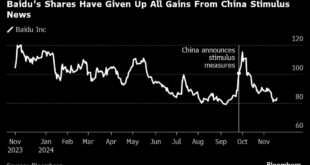The average bank has a dividend yield of around 2.5%, using the SPDR S&P Bank ETF (NYSEMKT: KBE) as an industry proxy. What if you could own a bank with a yield of 6.1%? What if it was conservatively run, had a strong core business, and was a reliable dividend payer? You would probably jump at the chance to own a high-yield bank like that. No problem — you can buy Bank of Nova Scotia (NYSE: BNS). Here’s why now is a great time to take the leap.
Why is Bank of Nova Scotia’s yield so high?
Bank of Nova Scotia, more commonly known as Scotiabank, has lagged relative to other banks. A big part of the reason for this is that it went in a different strategic direction from its Canadian bank peers. Most of the major Canadian banks chose to expand southward into the U.S. market. Scotiabank skipped over the U.S. and started to build a business in Central and South America.

The logic is solid, given that the U.S. is a highly competitive market that is also fully developed. The markets where Scotiabank went were developing and less competitive, suggesting the potential for more long-term growth. While that might have been true, and perhaps still is true, these less developed markets weren’t as profitable as hoped. Scotiabank has lagged its peers on key metrics like earnings growth, return on equity, and return on risk-adjusted assets.
Thus, despite being one of the largest banks in Canada (with an entrenched industry position thanks to strict Canadian banking regulations), Scotiabank is offering a dividend yield of 6.1%, more than twice the yield of the average bank. The bank has paid a dividend every year since 1833, has a generally conservative ethos (another function of being a Canadian bank), and has an investment grade rated balance sheet. Indeed, the risk here seems rather modest for the high-yield reward.
What is Scotiabank doing about its laggard performance?
Of course, the problem for investors is that Scotiabank hasn’t been performing particularly well relative to peers. But management isn’t ignoring the problem. In fact, it has taken the issue head on and is working in a new direction. It’s exiting weaker markets (such as Colombia) and putting more effort into expanding in better markets (such as Mexico). The company is also following its peers by building a greater presence in the United States.
That last part is important to Scotiabank’s approach, because it wants to create a dominant North American bank that reaches from Mexico to Canada and through the United States. In this way, it can serve a regional trading block with a geographically integrated product. This is where Scotiabank just made a big splash.
Instead of trying to build a business from the ground up, it has agreed to buy just shy of 15% of KeyCorp (NYSE: KEY). The move will take place across two transactions, and it’s expected to be immediately accretive to Scotiabank’s earnings. Plus, it provides a lifeline to KeyCorp, which needed to shore up its own finances. This is basically a win/win. However, the real benefit is likely to be longer-term in nature.
Right now Scotiabank’s investment is just that, an investment in another bank. However, it hopes that it can find ways to work with KeyCorp to offer products and services together. Notably, KeyCorp is more consumer-oriented while Scotiabank is more business-focused, so the two banks won’t be stepping on each other’s toes. Any partnership would be additive to each bank’s business.
There’s a five-year standstill clause in the agreement, so KeyCorp can’t do much more than this, for now. However, it’s hard not to envision Scotiabank at least considering a buyout of KeyCorp at some point in the future — a move that would instantly give it a large presence in the U.S. market.
The future is going to look very different for Scotiabank
Investors should never read too much into an investment like the one Scotiabank has just made. But it is a clear statement that management intends to shift gears in a dramatic and rapid fashion as it seeks to narrow the performance gap with peers. It’s going to be a multi-year effort, for sure. But with such a forceful push out of the gate from a financially strong high-yield bank, investors who think in decades and not days might want to dig in now. That fat dividend yield may not last as long as you think if Scotiabank’s business starts to turn around amid an aggressive push to improve performance.
Should you invest $1,000 in Bank Of Nova Scotia right now?
Before you buy stock in Bank Of Nova Scotia, consider this:
The Motley Fool Stock Advisor analyst team just identified what they believe are the 10 best stocks for investors to buy now… and Bank Of Nova Scotia wasn’t one of them. The 10 stocks that made the cut could produce monster returns in the coming years.
Consider when Nvidia made this list on April 15, 2005… if you invested $1,000 at the time of our recommendation, you’d have $630,099!*
Stock Advisor provides investors with an easy-to-follow blueprint for success, including guidance on building a portfolio, regular updates from analysts, and two new stock picks each month. The Stock Advisor service has more than quadrupled the return of S&P 500 since 2002*.
*Stock Advisor returns as of September 3, 2024
Reuben Gregg Brewer has positions in Bank Of Nova Scotia. The Motley Fool recommends Bank Of Nova Scotia. The Motley Fool has a disclosure policy.
Did This High-Yield Stock Just Change the Playing Field? was originally published by The Motley Fool
Source link
 meganwoolsey Home
meganwoolsey Home

